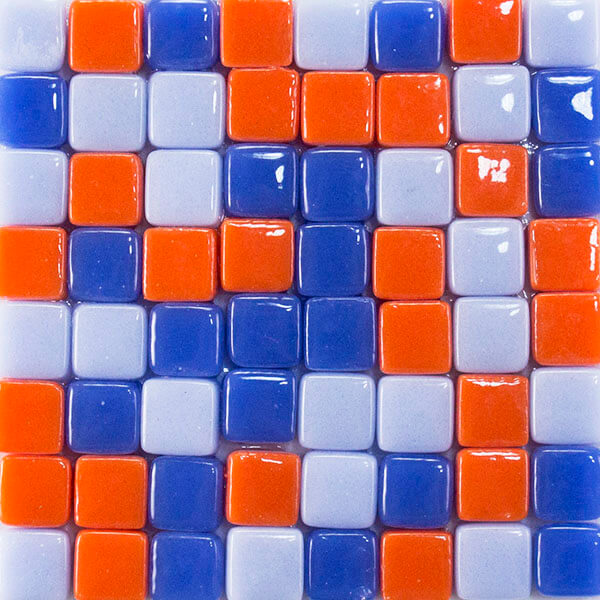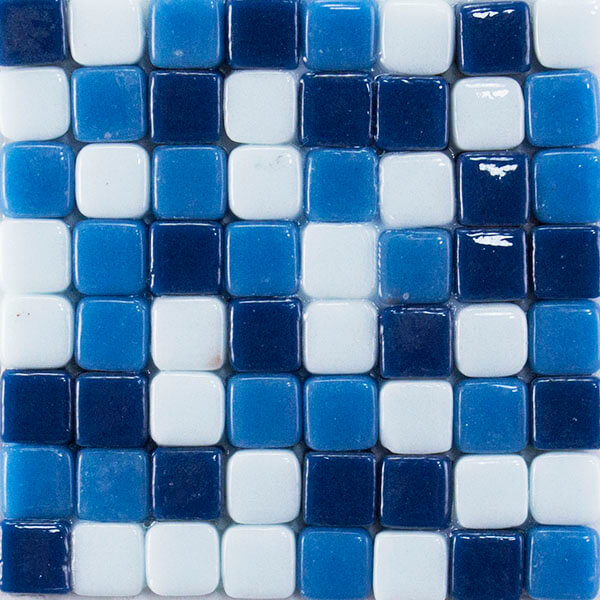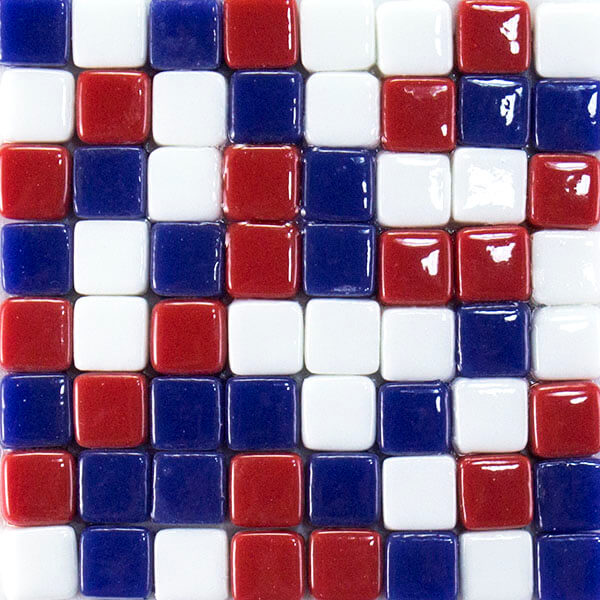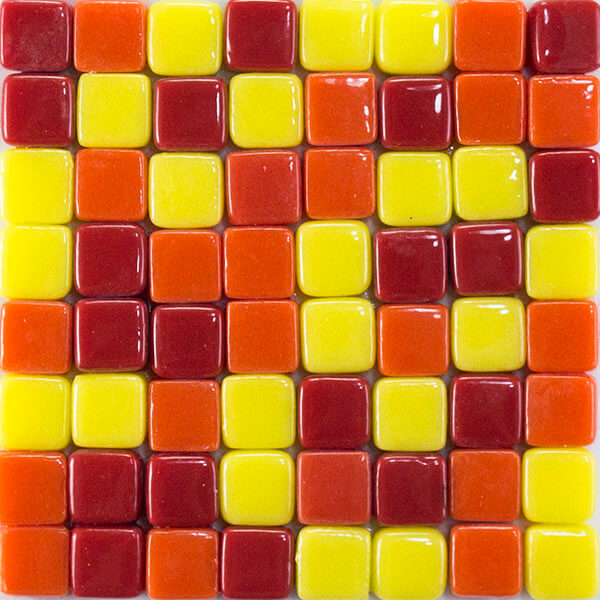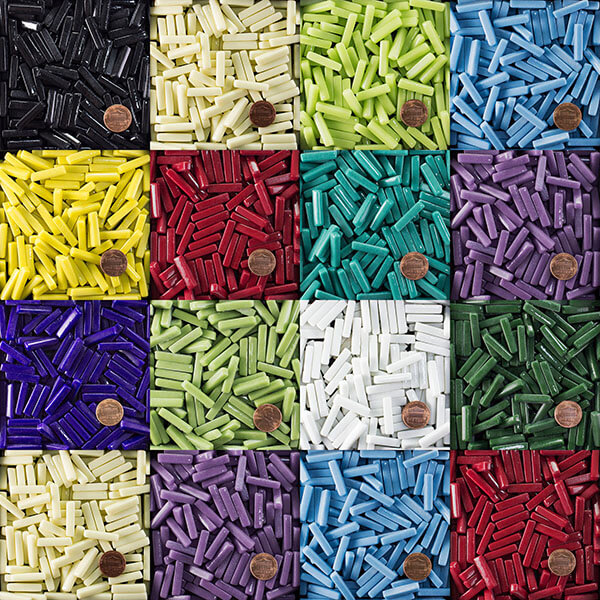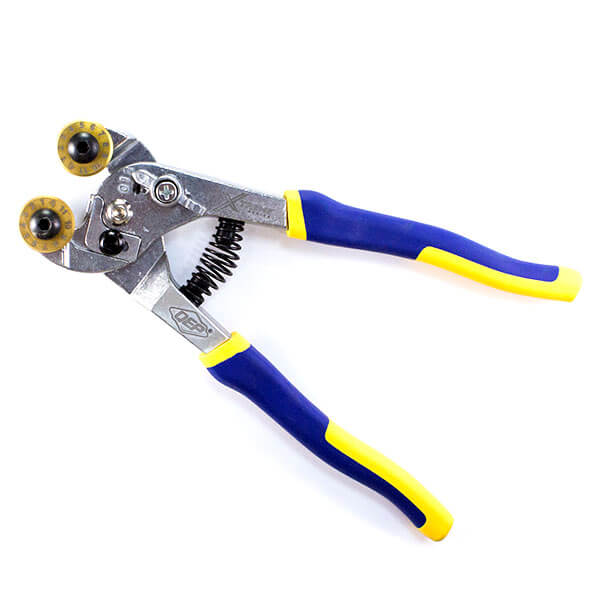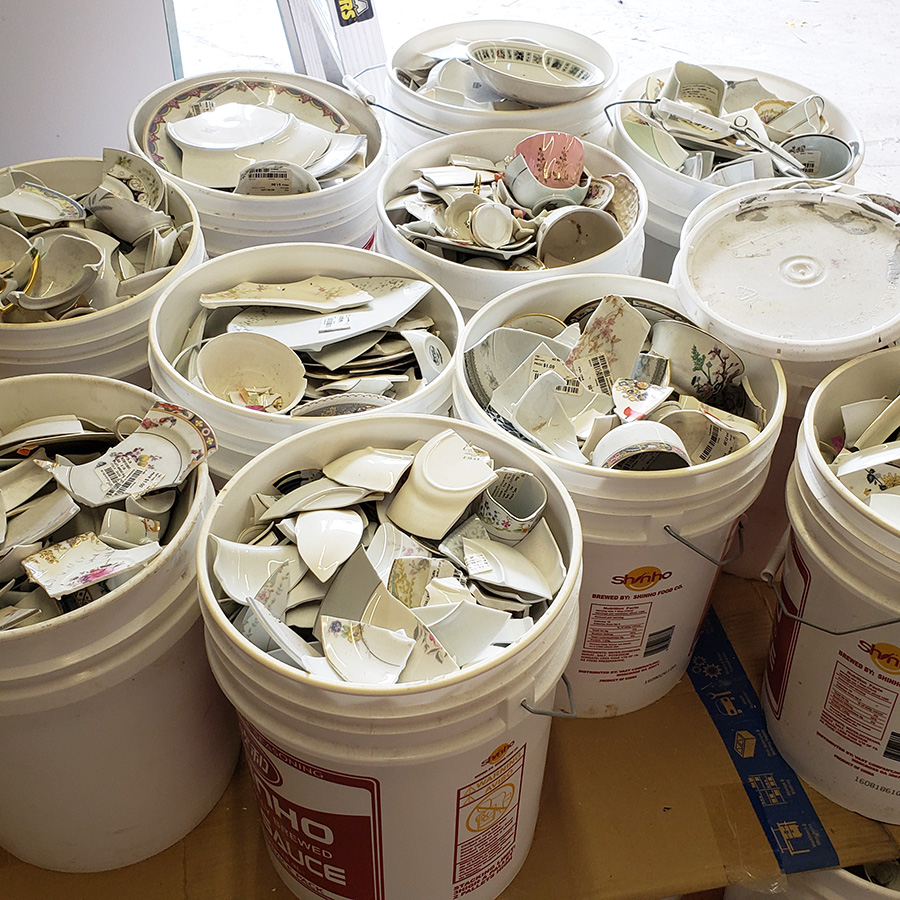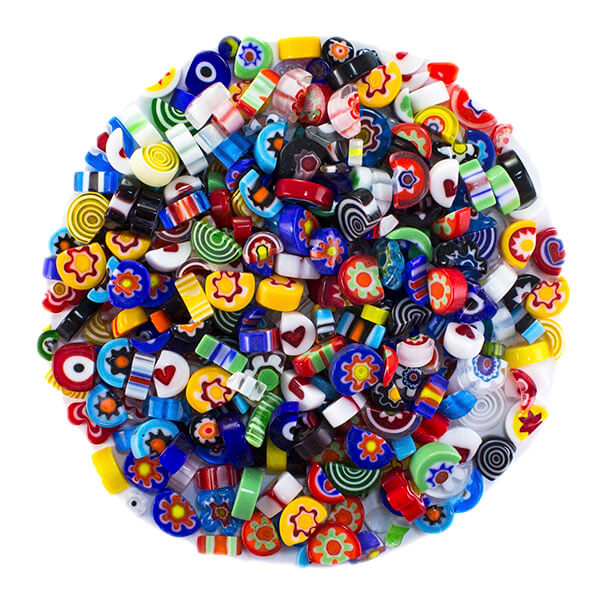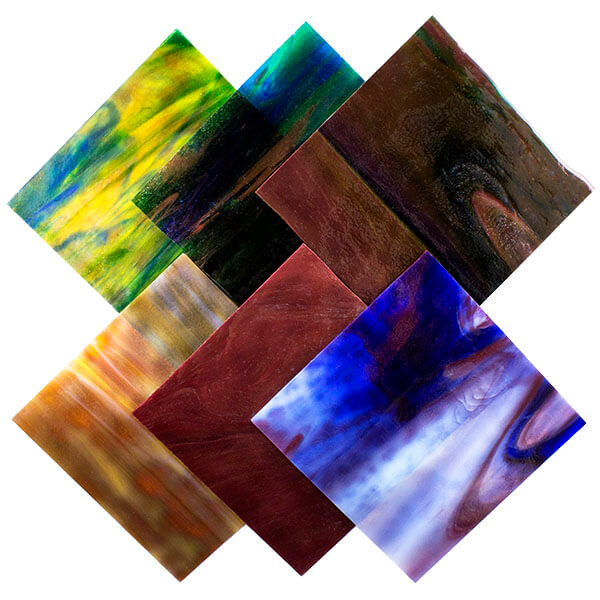
True Dichro Stained Glass by Youghiogheny will appear to change in color and opacity as the ambient light changes throughout the day or based on the type of light source. Dichroic glass will look best in traditional stained glass projects, or in glass-on-glass mosaic art where light can shine through the piece. Made in the USA.
Dichroic Stained Glass is sold in 6-inch sheets like the rest of our stained glass. Some sheets will have a rippled end along one side of the glass. Some colors have a wavy characteristic to them, while others are mostly flat. The thickness varies between 3 and 4 millimeters depending on the color.
Finish
The dichroic stained glass has a finish that is very similar to the High Strike glass we sell in the main stained glass category.
Youghiogheny Dichroic Stained Glass Sheet 6-Inch
- STAINED GLASS VARIES IN COLOR AND PATTERN BY SHEET. Do not order if you cannot tolerate variation.
- Sales unit: 6×6-inch square piece
- Squares are hand-cut using a straight edge and not always perfectly square.
- This is cutting stock for making small mosaic tiles; not intended for use as finished mosaic tile.
- Thickness: 3 mm or 1/8th of an inch
- Pigments: colorfast metal oxide.
- Coverage: 1 sheet covers approximately 1/4 square feet.
- frost proof
- impervious to liquids
- Suitable for indoor and outdoor installation.
- NOT suitable for floors. More fragile than glass tile.
Stained glass can have sharper edges than regular molded glass mosaic tile, so care must be used in cutting, handling, and grouting. Stained glass varies in color and pattern by sheet. Do not order if you cannot tolerate variation.
Product Coverage
Each 6-inch square sheet covers approximately 1/4 square feet when uncut. When you cut it up, you will gain additional coverage from the grout gap, but you will also lose some coverage in the form of cutting waste.
Compatibility
Sheet thickness is 3mm or approximately 1/8 inch, which is NOMINALLY the same as most of the glass mosaic tile we sell. That being said, mixed-media mosaics and even mosaic table tops are routinely made from dissimilar materials with even greater differences in thickness.
Cutting True Dichro Stained Glass for Mosaics
True Dichro stained glass can be cut quickly with minimal force using our Mosaic Glass Cutters. Use this wheeled cutter for irregular rectangle and triangle shapes. For long straight cuts and curved cuts, use the Pistol-Grip Cutter to score the glass, and a pair of Running Pliers to apply pressure and snap it. Finally, you can also use cutting oil to lubricate cutters for more precision.
Use as Cutting Stock vs. Whole Tile
We hand cut stained glass sheets using a straight edge, and so there is variation in size and straightness. We sell these square sheets as cutting stock for making small mosaic tiles, not as single finished tiles. Some sheets may have a rippled edge along one side of the glass – this is the outer edge of the larger sheet we cut into squares.
Mounting Dichroic Stained Glass
First, before mounting always rinse stained glass with detergent to remove any traces of cutting oil residue. Even if you don’t use cutting oil, it may be present from the manufacturer. For dry indoor mosaics, Weldbond adhesive works well for mounting stained glass. However, for outdoor and wet mosaics, we recommend you use thinset mortar.
Smoothing Sharp Edges
Stained glass often has sharper edges than molded glass mosaic tile when cut. At our studio, we use a marble file or a rubbing stone to knock off any razor edges remaining after cutting.
Safety Notes
We have chosen Youghiogheny stained glass for its beautiful quality and pigment density which makes it suitable for mosaic artwork. However, while it is non-porous and suitable for outdoor mosaic art including benches, tables, and garden décor, it is not recommended for tiling floors. If a mosaic becomes damaged on a surface where it could cut someone, then use the fine edge of a marble file to smooth the edge until you can replace the tile. This also applies to mosaics made with molded tile.
Rendering in Mosaic Art
Traditional stained glass art often makes use of custom-cut pieces that define entire figures or components. In mosaic art, the approach is different: figures and components are almost always built up from multiple tiles unless the object in question is particularly small. It is best to stick to one approach or the other for a particular piece of art.
American Made Stained Glass
True Dichro is made by Youghiogheny in Connellsville, Pennsylvania on the Youghiogheny River. Youghiogheny makes quite possibly the most beautiful glass made in the world, including Italy. This is a great opportunity to buy an American-made product and support high labor and environmental standards at a price that is competitive with molded glass tile made in China.
How To Make Mosaic Art
For more advice on designing your mosaic project or mounting, cutting, and grouting tile, please see our page of Mosaic Frequently Asked Questions or our Mosaic Information Guide, which lists instructional pages described by topic. We also post new articles about making mosaics at our How to Mosaic Blog.
